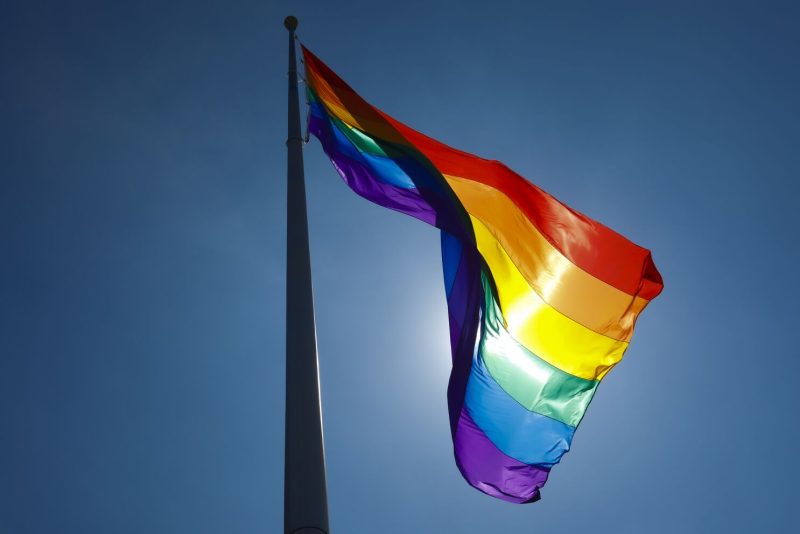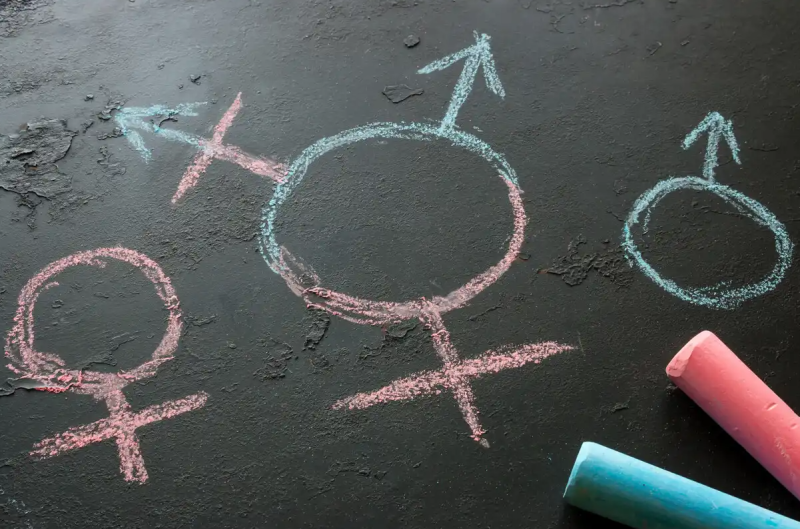 Human beings better understand ideas and concepts when they assimilate them through labels. Although it is true that in some cases, these can be limiting, in others, they are very practical. The best example is found in the types of gender identity, which bring together dozens and dozens that have become popular in recent years.
Today we will talk about the most common types of gender identity, their characteristics, and some name alternatives. For this, we have chosen the general definition since it is not uncommon for these to be used under certain nuances by its members. Also, we write down some ideas and reflections so you can understand them better.
Human beings better understand ideas and concepts when they assimilate them through labels. Although it is true that in some cases, these can be limiting, in others, they are very practical. The best example is found in the types of gender identity, which bring together dozens and dozens that have become popular in recent years.
Today we will talk about the most common types of gender identity, their characteristics, and some name alternatives. For this, we have chosen the general definition since it is not uncommon for these to be used under certain nuances by its members. Also, we write down some ideas and reflections so you can understand them better.
Contents
Difference Between Gender and Sex
Before reviewing the most used types of gender identity, we must first clarify the difference between sex and gender. Sex is a series of physical, biological, genetic, and hormonal traits that characterize a person. Gender is how these are identified from the psychological level and how they express it externally. A person can psychologically identify away from the male/female divide. A person’s physical or biological traits may differ (as with intersex). It is also pertinent to clarify the difference between gender identity and gender expression. In the first case, reference is made to the personal perception that one has regarding one’s gender. In the second case, how it manifests itself in society. It is important to note that gender identity types are unrelated to sexual orientation. This last term describes the physical or emotional attraction towards members of the same or different genders (heterosexuality, homosexuality, bisexuality, pansexuality, and others).Types of gender identity
The gender identity label was coined by the American psychiatrist Robert Stoller in 1964. This idea has mutated throughout history to the point that gender dysphoria was even referred to as a synonym, defined as the anguish caused by the discrepancy between assigned gender and gender identity. In any case, both terms are only used in the medical literature, so members of the LGBT+ community prefer the term gender identity. Since there are prejudices about the types, partly developed by ignorance, we present the most accepted and well-known.1. Cisgender
Cisgender is a term used to describe those whose gender identity matches the sex they were assigned at birth. Another definition of this label is the correspondence that exists between gender identity concerning sexual phenotype. The term was created by the German psychiatrist Volkmar Sigusch. As we have explained, gender identity is not related to sexual orientation. Therefore, a gay, lesbian, or bisexual person can be cisgender to the extent that their identity matches the sex assigned at birth. They identify as a man or a woman regardless of their sexual or romantic preferences.2. Transgender
 Transgender is a concept opposite to the previous one. Cis is a Latin prefix corresponding to this site or from here. Trans translates as ‘from the other side’ or ‘beyond.’ Therefore, a transgender person does not identify with the sex assigned to them at birth. In other words, their identity does not correspond to their sexual phenotype.
A transgender can be heterosexual, bisexual, homosexual, or asexual, and even dispense with these labels. Like the previous case, it is not related to sexual orientation. Those who have transitioned into the sex corresponding to their gender are often referred to as transsexuals. Many community members reject this term.
Transgender is a concept opposite to the previous one. Cis is a Latin prefix corresponding to this site or from here. Trans translates as ‘from the other side’ or ‘beyond.’ Therefore, a transgender person does not identify with the sex assigned to them at birth. In other words, their identity does not correspond to their sexual phenotype.
A transgender can be heterosexual, bisexual, homosexual, or asexual, and even dispense with these labels. Like the previous case, it is not related to sexual orientation. Those who have transitioned into the sex corresponding to their gender are often referred to as transsexuals. Many community members reject this term.
3. Intersex
Apart from controversy, an intersex is a person whose physical, biological, hormonal, or genetic characteristics prevent them from being classified as a man or a woman. It is very common for the word intersex to be confused with transgender and vice versa. Some do not consider intersex as part of gender identity types, although others do. Intersex people may have ambiguous genitalia or maintain a discrepancy between genitalia and internal organs. It is not a single condition but rather groups dozens of manifestations with some characteristics in common. For example, true gonadal intersex. This is characterized by individuals who have ovarian and testicular tissue from birth.4. Queer
Queer is a neologism that brings together all those people who do not feel identified with society’s ideas regarding gender and sexuality. Its definition has changed throughout history since, in its beginnings, it was used in a derogatory way to describe homosexuals. According to the book Glossary of sexual diversity, gender, and sexual characteristics, Queer people can manifest more than static identities, expressions, and experiences that:- They move, alternately, between one genre and another.
- They are produced by the articulation of the two hegemonic genders.
- They formulate new identity alternatives, so there would be no transition that seeks the opposite pole, as in the case of the transgender.
5. Gender fluid
Gender fluid is another type of gender identity that involves more confusion. A person identifying as gender fluid undergoes temporary, sporadic, or permanent transitions through different genders. The number of genders with which they identify varies according to each case. Sticking to the male/female binary or exploring other possibilities is possible. The transition can be made without a specific reason or depending on moods or interactions with the environment.6. Genderless
A label that has become popular in recent years is genderless, people also known as agender or non-gender. Some define themselves as gender-neutral, gender white, or gender-free. In short, it designates all those not identifying with any particular gender. Importantly, it has nothing to do with being asexual. As we have repeatedly explained, types of gender identity do not correspond to sexual attraction. Do they exist without asexual genders? Yes, of course. Just like asexual binaries or asexual transgenders. However, not all of them are classified as such.7. Bigender
A term often confused with bisexuality, although some experts point out that the distinction is enough to consider them different concepts. Someone who identifies as a bigender likes and is comfortable mixing male and female gender identities. In this sense, one can self-perceive as a man, woman, or both, with interdependence on the sex assigned at birth. In other words, he has two genders.8. Intergender
Very similar to the previous case, we find the intergender label. As the term indicates, it defines those who feel neither men nor women but an intermediate facet between them. Like other types of gender identity, the differences are small but enough to qualify separate concepts. They can manifest behaviors, ideas, and ways of acting associated with men and women without, in turn, feeling identified with one in particular. Many intersex people use this label, although we also find thousands who are not and who are equally sympathetic to the idea.9. Third gender
 The third gender is a label with multiple meanings. Some States include it as a legal alternative when carrying out a legal procedure; others use it to include all types of gender identity. In the same way, some use it to describe an indefinite state between man and woman (in line with intergender), although also as a category far from them.
Given the terminology that refers to a third option, many prefer to use the latter definition. Although it is a concept that has become popular recently, dozens of civilizations throughout history have recognized a third gender independent of man and woman.
The third gender is a label with multiple meanings. Some States include it as a legal alternative when carrying out a legal procedure; others use it to include all types of gender identity. In the same way, some use it to describe an indefinite state between man and woman (in line with intergender), although also as a category far from them.
Given the terminology that refers to a third option, many prefer to use the latter definition. Although it is a concept that has become popular recently, dozens of civilizations throughout history have recognized a third gender independent of man and woman.